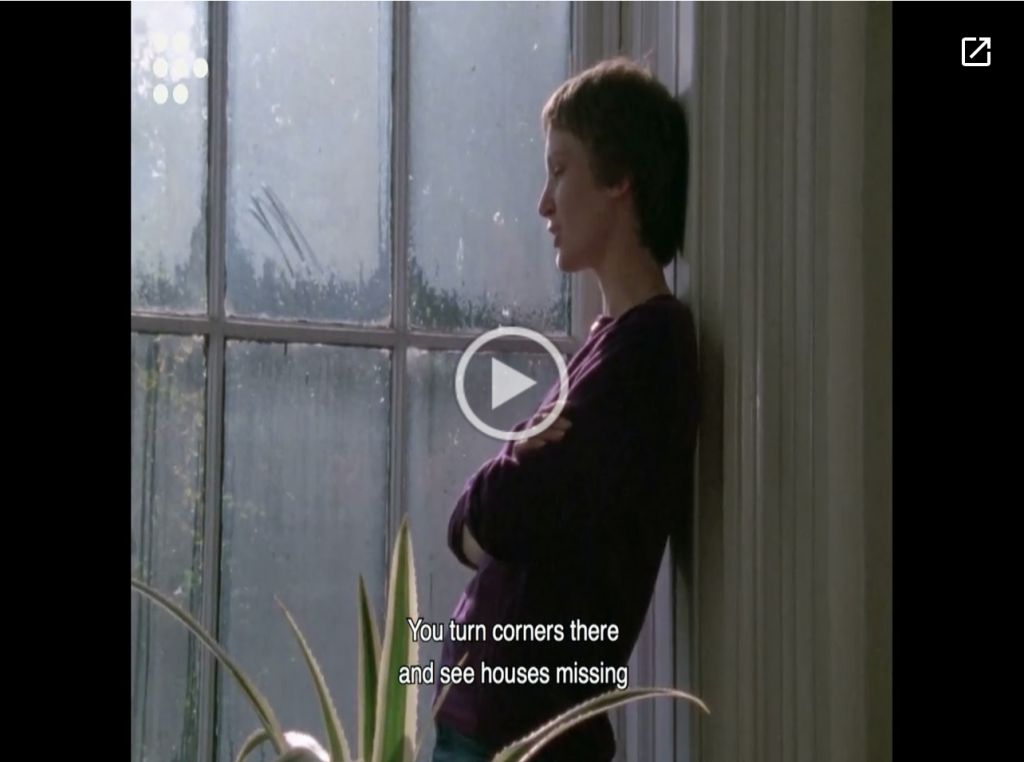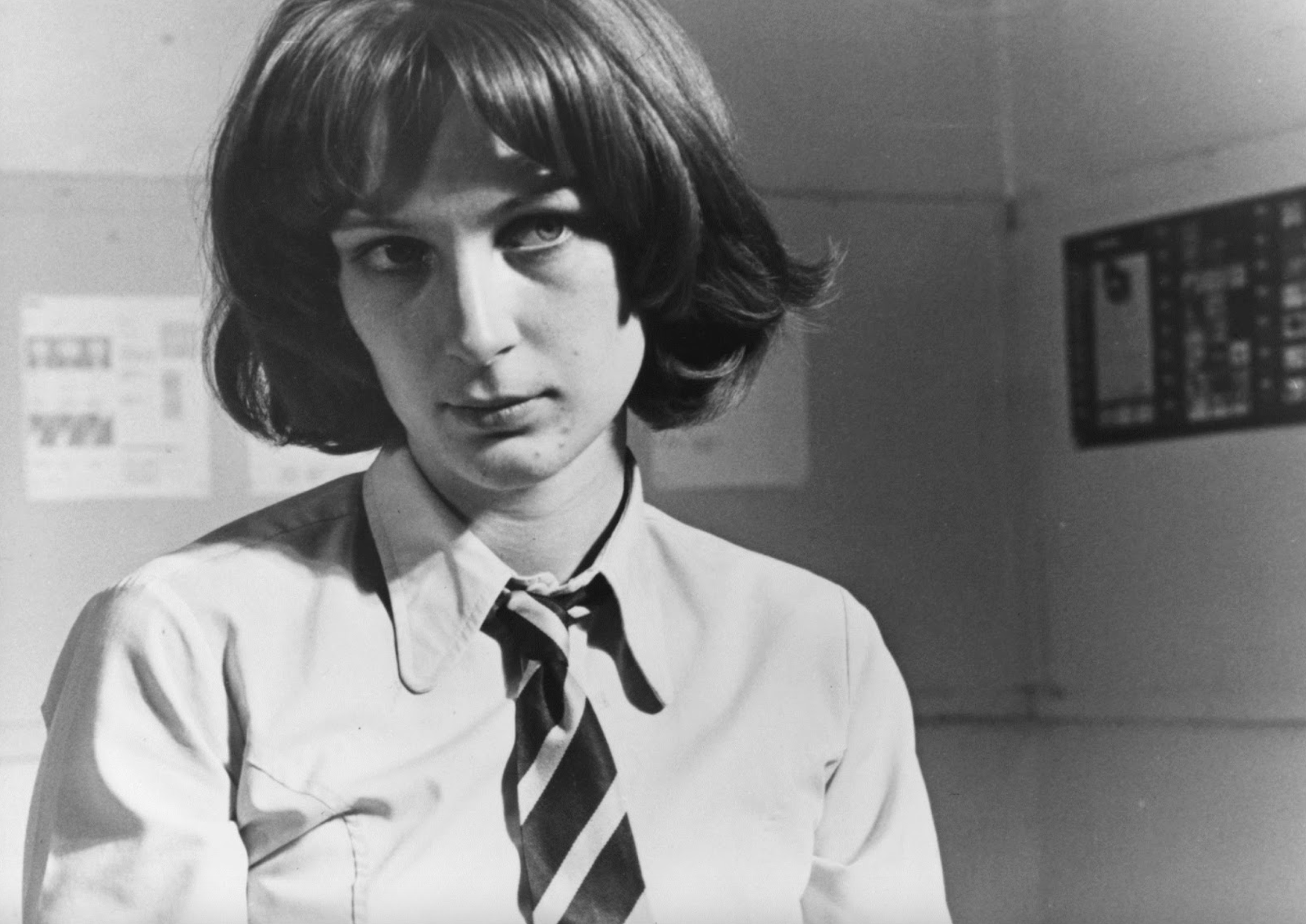By Christine Molloy.
Maeve is currently available to stream via MUBI, and Culture Club readers can get 30 days’ free streaming. The film is also available on Blu-ray from the BFI, currently £11.99 (a discount of £3) in the BFI Shop.

*
SOMEWHERE ELSE
Watching Maeve for the first time
I know I first watched Maeve in the early 2000s. I had recently moved to Hackney, London, and together with Joe Lawlor, I was embarking on a slow journey from live theatre work into film. Someone had asked me a few years earlier if I’d ever seen Maeveby Pat Murphy. Not only had I not seen the film, I’d never heard of Pat Murphy. And bear in mind, I grew up in Dublin and left secondary school in 1983, and at that time, along with Joe, I was already passionate about film and devoured as much of it as I could, regularly using my Flexi-time from my Civil Service job, to go catch a film – or often two – in the Screen Cinema, at the time one of Dublin’s foremost arthouse cinema venues for independent and world cinema.
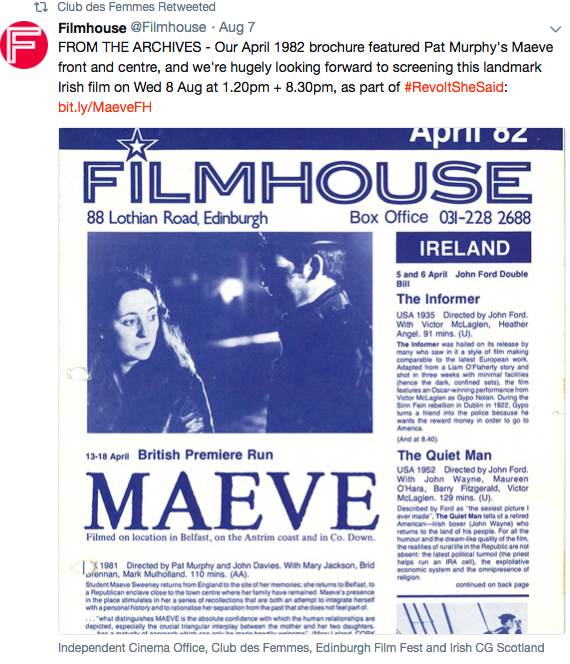
Again, why had I never heard of Pat Murphy, or of Maeve? When, after all, Maeve had opened the Edinburgh International Film Festival in 1981. And then went to Venice – apparently, the very first BFI-financed film to ever screen in Venice. And it was also the first film to be filmed on the streets of Belfast since the Troubles started. And yet, back home in Ireland, who would have known? Not many. I, the cinema lover, certainly didn’t. Somehow, and I can’t remember how, I got hold of a VHS recording of Maeve. The way you did back in the early noughties – in the pre-times. It’s how I first got to also see Wanda by Barbara Loden. And Elephant by Alan Clarke. And Leeds – United! by Roy Battersby. People would pass VHS copies of films around. Like contraband. We put the precious, borrowed tape into the VHS player and were captivated from the opening frames.
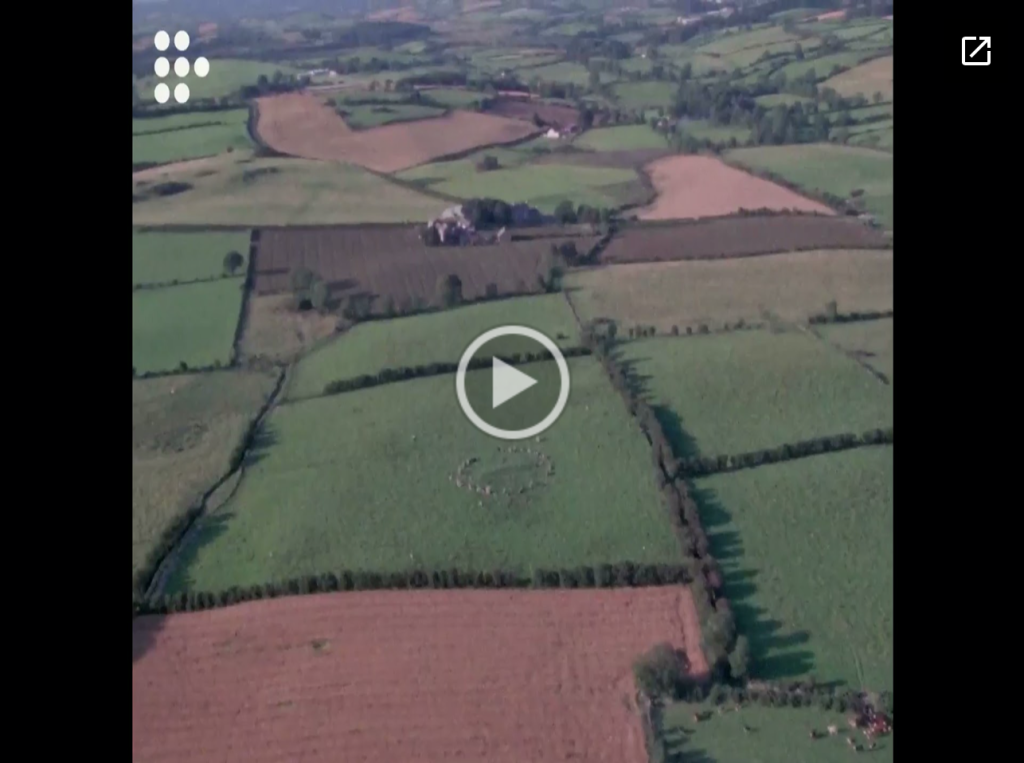
I honestly think, that when I first watched Maeve, I thought that Pat Murphy was a man. Or, I assumed that Pat Murphy was a man. And why wouldn’t I? In my defence, I quickly put myself straight on that. But the realisation – that Pat Murphy was a woman director – only compounded my feelings about the film. How hidden it was. How out of view it was. Over the years, I held onto the memory of watching Maeve that first time round. Like I had discovered some long buried treasure. Not unlike the strong feelings I had when first watching Barbara Loden’s Wanda. Why is it no surprise that both of these powerful and seminal films – both by female first time directors, both low-budget and independent, both lauded at the time, both screening in Venice (Wanda in 1970 and Maeve in 1981) – were then both all but forgotten, almost written out of history?
Watching Maeve for the second time
Before I talk about watching Maeve for the second time, I had to figure out how in God’s name I missed a Club Des Femmes screening of Maeve at the Rio Cinema, Hackney – one of my local cinemas – and with Pat Murphy in attendance, and John Davies and Robert Smith, her two collaborators in the making of Maeve. The fact is, I was in Dublin on day 5 of shooting our third narrative feature, Rose Plays Julie. I am so glad I have such a good, ironclad excuse. Getting back to the second time I watched Maeve. Rewatching Maeve recently – by way of the hugely welcome BFI remastered 2K Blu-ray iteration, and knowing it is currently screening on MUBI – I was overcome with emotion. And so utterly grateful again, that this miracle of a film exists.
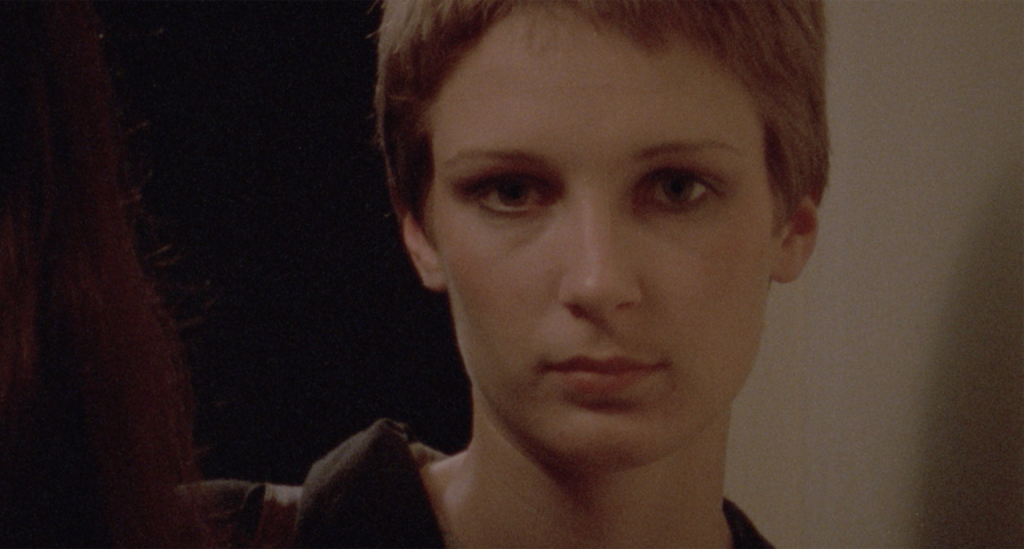
Because it is a miracle. I found myself seeing myself in the character of Maeve, even more so the second time round. As an Irish woman who came of age in the 80s, this is a very powerful thing. Maeve is the only cinematic version of the young woman I was, growing up in the overwhelmingly oppressive bad old days of holy Catholic 1980s Ireland. My struggle was different to Maeve’s, but not so different at its core. We lived on the same island after all. And were growing up at the same time. When Maeve tells her ex-boyfriend, Liam, towards the film’s end, that one day, if the Republican struggle succeeds, then women will ‘recognise [men] as the next stage in their struggle’, in the Republic of Ireland, women were already experiencing that as fact. The intrusion in their lives on a daily basis by the church and the state – by the patriarchy – was a lived reality.
A personal anecdote from my 16 year old self
I was in the kitchen with my Mother and she was brushing my hair. I was complaining about my two younger brothers and how they got away with never having to do any housework. Soon the exchange between my Mother and me became heated, and suddenly my Mother slapped me across the face and warned me not to become ‘too emancipated’. The slap stunned me. It had been a long time since my Mother had hit me in anger – something I think most children were used to from that era, both at home and at school. But worse, I didn’t know what emancipated meant. I had to look it up in the dictionary. But my Mother had said for me not to get ‘too’ emancipated which meant, that she knew I was already becoming emancipated. That I was learning to emancipate myself. It’s something I’ve never forgotten. My mother had to leave school when she was 14 to go work in a factory. And when she was 23, on the day she got married, she then had to leave her now much-loved factory job, so she could start her new job, the job of wife and future mother. It was called the Marriage Bar, and was in use in Ireland up until the 1970s. My Mother didn’t want that for me. And she knew it wasn’t going to be my lot, but at the same time, I think in that moment, she didn’t want to lose me either. I feel that pain and see it in the scene with Eileen, Maeve’s mother, when she berates Maeve for ‘never [looking] back once to say goodbye’ the day Maeve gets on a plane that will take her away from Belfast to London. My Mother wasn’t as entrenched in a place as Eileen was, but there was still pain there.
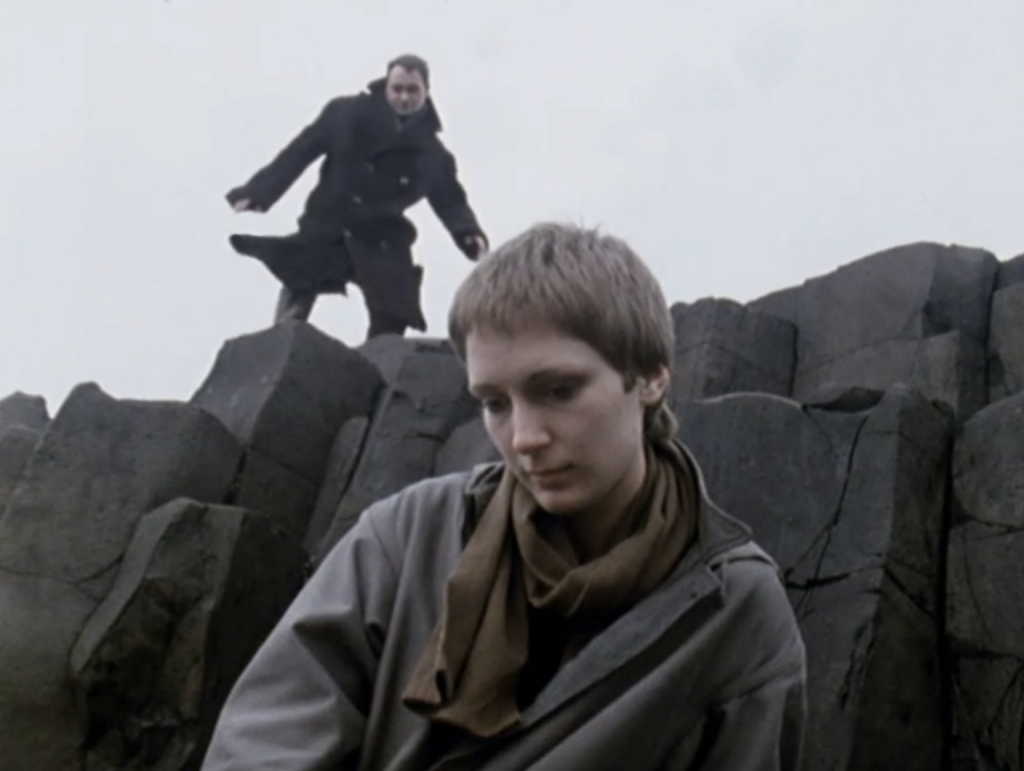
A scene from Maeve
Over the approximately 20 years from when I first saw Maeve, the image that would come to mind whenever I thought of the film was an image of Maeve, wrapped up in a blanket in front of an open fire. I wouldn’t have known why it was that image in particular that I held onto, but it was. Rewatching the film, I could immediately understand why. Not only is this image part of a scene that is an exercise in cinematic storytelling mastery, it is also so rich and evocative in its ideas, and probably comes closest in the film to capturing something of the teenage, Irish girl I once was.
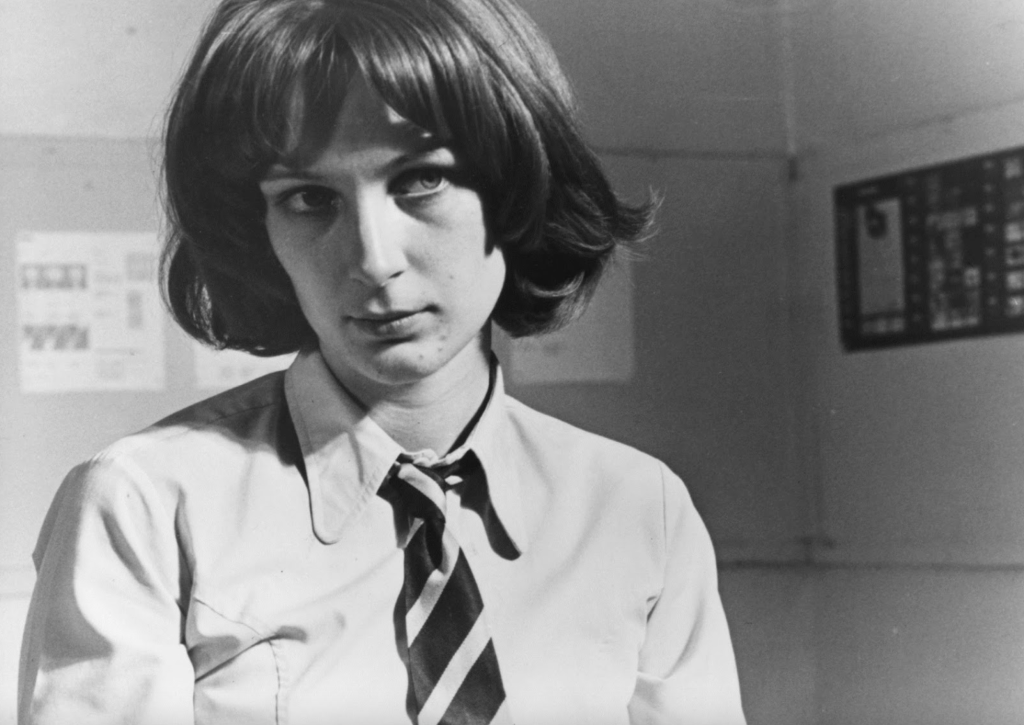
The scene opens with Maeve knocking on the door of ‘The Irish Society for Spiritual Awareness’. The door reminds me of the door to the house in Dublin I used to go to as a teenage girl – when I was still partly in the grip of Catholicism – when I was a member of The Legion of Mary. A very strange cult-like organisation, which I have no idea how I ended up joining, but it probably had something to do with getting to hang out with Antoinette Lyons, who looked older than her age, and had gotten in to see The Exorcist when she was just 13, and would give us a scene by scene account of the film on Legion nights, on the way home on the bus.
The teenage Maeve is going to visit her then-boyfriend, Liam. He has moved out of his family home and into his own place. This is Maeve’s first visit. You know immediately, cued in by the intensity of their kissing on the threshold, that they will both lose their virginity that day. Once inside, Maeve is horrified by the grimy, miserable reality of the bedsit. She complains that it is damp and cold. ‘I’m sick of places that are full of other people’s smells and dirt’, she complains to Liam, encapsulating in that sentence a much bigger idea about history and place and society – and the different ways in which these narratives cling to us like a smell that can’t be escaped. The ontological security, which Maeve and Liam should feel when the door to the bedsit is closed, is replaced by a feeling of being trapped.
There is a cut, and it is now later that night, and the camera is framed on a barricade of furniture that has clearly been built by Maeve and Liam, dividing the bedsit into two sections. There is a glow coming from behind the barricade, the warm, orange glow of flames. The camera slowly pans and tracks towards and then past and around the barricade, revealing Maeve and Liam naked, under blankets, on the mattress – now on the floor – in front of a blazing fire. We know they have had sex. It’s a complicated scene partly due to the powerful and symbolic presence of the barricade, not unlike the barricades on the streets of Belfast at the time, but it is also playful, as downstairs, in the room beneath them, a ritual is being held by the Irish Spiritualists, to bring about peace in Northern Ireland, which is being disturbed by the sound of the love-making from overhead.
The tracking shot cuts to a locked off shot of Maeve and Liam, framed by blackness, not unlike a classic chiaroscuro painting by Vermeer, and we enter into their private world. Gone is the barricade, the oppressiveness of the smelly, dirty room – and suddenly we’re with these two characters in the intimacy of this most intensely personal moment between them. For me, the cinematic vision that went into the construction of this sequence of shots that make up this scene is quite breathtaking. It eschews social realism, or narrative-driven drama, or naturalism, for cinema – pure and simple – utilising the language and power of cinema beautifully. Exquisite. And in this unfolding sequence of shots, we get to see the profoundness of the exchange between Maeve and Liam. Maeve is reflecting on what has just happened between them. It wasn’t exactly as she always imagined, she admits. Her fantasy of what the moment could have been. Yes, there is an open fire. Yes, there is a bottle of wine. So, the moment certainly ticks some of the required boxes, and wouldn’t look out of place in a magazine account of such a moment.
However, her perfect, glamorous fantasy of making love for the first time would have necessitated it happening ‘somewhere else’. Liam is confused by her comments and wants to know what she means by ‘somewhere else’, and asks defensively if it was ‘alright’. He doesn’t get what she is trying to say. Then she explains exactly what she means, ‘Your fantasy gets acted out in a shape that fits itself round your surroundings’ she tells him. And this is the line in the film that resonates with me more than any other. That gets to the heart of something for me. That explains why I remembered this moment above all others in the film. It’s the need to escape. To find new surroundings to wrap your fantasies around. Some people feel it very strongly.
I know I did. And not unlike Pat Murphy, I found myself leaving Ireland for England when I was 22 – like so many other young Irish people in the 80s – and going to an arts college, that would open up my mind in ways that could never have happened if I’d stayed. There is the pain in going. But there is also the liberation. Maeve, through the character of Maeve, encapsulates that struggle in such an moving way. I will always be grateful that the film was made. That this female take, on this period of time in Irish history, exists.
